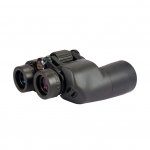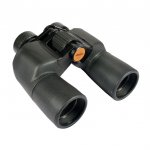As I work for Leica I have my choice of binoculars anytime I go out in the field and yet I only ever choose the 7x42 HDs. Comparing the 7x42 HD to the 8x42 HD the differences are quite small and if Leica didn't make a 7x42 I'm sure I'd be perfectly happy with an 8x. However, the advantage 8x binoculars provide over 7x, the added magnification, is an advantage I, personally, don't want or need. In contrast, the benefits provided by a 7x, slightly greater FOV and depth of field, are advantages that I constantly use.
However, I think this thread illustrates that not everyone uses their binoculars the same way or has the same taste in optics. It also illustrates that different people approach the activity of birdwatching in different ways. For these reasons there is no perfect binocular. Even though I'm totally sold on 7x binoculars, there are situations, usually once or twice a month, where I momentarily wish I had 10x binoculars. I know from personal experience though that I'm not happy using 10x, as a few years back the 7x42s (non-Leica) I was using at the time crapped out on me and I ended up switching between an 8.5 and a 10 (both non-Leica) for 6 months before I got 7x42 HDs. I spent the entire winter swearing at whichever binocular I was using at the time because I was missing birds I would not have missed using a 7x. (Mostly passerines that I got the bins on but was still messing with the focus wheel when they took off.)
I think the advantage a larger field of view provides is not always explained clearly and therefore isn't always valued as highly as it might be. The advantage to a larger FOV is not that is makes it easier to follow a single bird. Even birds like swallows and swifts should be easy to follow with a 10x or even a 12x binocular. The difference is this:
In closed forest or hedgerow, brushy field situations: You see a bird and you raise your binoculars but as you do so the bird disappears into the vegetation leaving you with a tantalizing glimpse of something that looked really interesting. You can either lower your binoculars and try to spot the bird again with your eyes, raise them again and risk having the bird disappear again while you are doing so or you can make an educated guess on where bird is most likely to reappear based on where you last saw it and train your optics on that point. Depending on the situation, I tend to favor the latter strategy. In these situations there is no guarantee that you have guessed correctly and quite often I am able to get on the bird by detecting a tiny bit of movement at the very edge of my FOV. The more FOV you have the more likely you are to gamble and keep your optics up and the more likely that gamble will be successful.
Open situations looking at distant objects or scanning: In open situations great FOV provides no benefits when looking at a single object, but pays huge rewards when looking at a distant object and you spot something else at the edge of your FOV. I have spotted countless interesting birds, animals, ect at the edge of my FOV while looking at other objects. The greater your FOV the more likely you are to stumble on something great while looking at something else entirely. Just yesterday I was looking at a flying Black-bellied Whistling-Duck and two other Whistling-Ducks skimmed through the upper edge of my FOV. I raised my bins a little and found that they were Fulvous Whistling-Ducks, a species not seen in my county in many years. There are other scenarios were greater FOV pays dividends, but those are two common ones.
I actually came to the conclusion that I was seeing more birds using 7x while hawkwatching because I was regularly picking up birds at the fringes of my FOV using 7x.
I should point out that I carry a scope all the time. If I wasn't also using a scope I might consider 8x binoculars. I should also confess that I definately fall into the holistic school of bird ID. However, I also look at details, such as molt limits, all the time and find that the 7x bins work well for this because of the stability of the image.
I agree with everyone that is pining for a high-end 7x35. No one makes them for economic reasons. Buyers buy more full-sized binoculars than 32mm and more 8x and 10x than 7x. A 7x35 retailing for ~$1750 would have a small, but enthusiastic, audience. High-end 8x32 models are slowly gaining more traction with birders and may eventually lead to the production of a 7x32/35.
To each his (or her) own!
Cheers,
Cameron Cox
Leica Sport Optics







